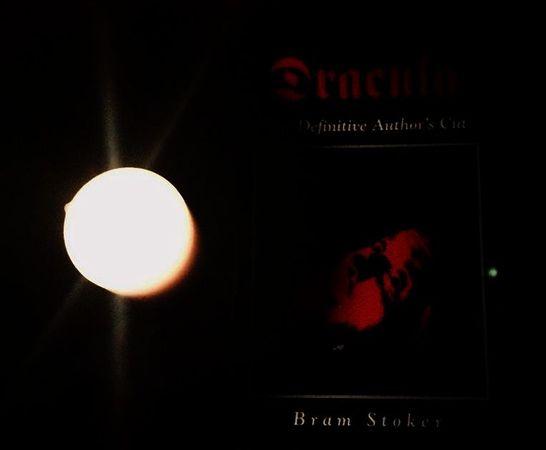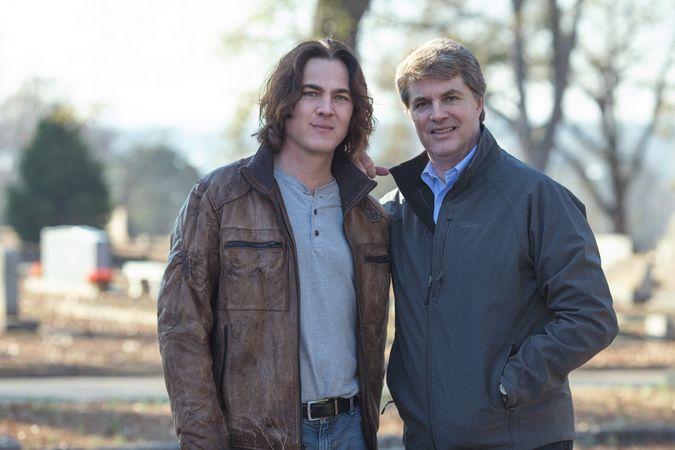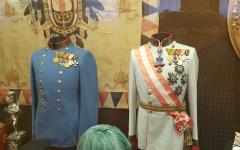IN SEARCH OF DRACUL - INTERVIEW WITH DACRE STOKER
The book, ’Dracula’ is like a good old friend, from time to time we read it again and again. When it was released 121 years ago, the author, Bram Stoker did not know how big it would be; since its first release, many film adaptations, theatre plays and musicals have been made, moreover, several book prequels, sequels and other book adaptations can be found as well in the bookshops.
It is a fact that Stoker had a huge impact on the vampire literature despite the fact that he was not the first author who lifted these blood-sucking creatures from the folklore. In the late 18th century vampires could be found in the early gothic poetry, then came several novels and short stories which adapted the theme very well, among the many works there is ’Der Vampyr’ by Ossenfelder and ’Carmilla’ by LeFanu to name a few. However, it was Bram Stoker who created the modern form of the vampire and since his book was released, his Count Dracula has become a centre point in the genre.

His great-grandnephew, Dacre Stoker, the former sportsman and high school teacher, was impressed by his ancestor work as well. He wrote two books connected to the original ’Dracula. The first was a sequel, titled ’Dracula: The Un-Dead’, co-written with Ian Holt, was a direct continuation of the 1897 work. Several years later, in 2017 he teamed with J.D.Barker in order to write a prequel to the original novel. ’Dracul’ has turned out to be a huge hit all over the world. Instead of creating background stories to the characters, Dacre Stoker and Barker created an original storyline, based on some documents connected to the life of Bram Stoker. The novel is very successful and a film adaptation will be made by Paramount Pictures.
According to Dacre Stoker, the original typescript of ’Dracula’ was discovered in a barn, he got the opportunity to read it last year and he realized that there was plenty of omitted material in it before the original novel began. Among them, there was another storyline with lots of notes with different ideas. This discovery was the key inspiration of the novel. I got the opportunity to talk to Dacre Stoker via the internet about his new book. According to him, it is very satisfying to see that the book has turned out to be a success and he is happy when he bumps into excellent reviews, but he keeps them in perspective.

JD Barker and Dacre Stoker photo by Dayna BarkerHe also talks about the time when he read ’Dracula’ for the first time, he says that he was a teenager, but later as a university student, he immersed into the novel in a more serious way. Then he had already known that he was a relative of the late writer. He also shares with me that whenever he reads ’Dracula’, it reveals more elements of its complexity to him.
‘I had a general idea of the story in my mind for a long time, but it was not until I started to work with JD in 2016 that the full story took shape’. – he responds when I want to know more about the collaboration with Barker and the sources he used for the novel.
‘It was JD’s ability to weave the factual parts of Bram’s life into our fictional story that we created such a remarkable and seemingly true story. There were many documents that we used as inspiration and also as references; The original preface to Dracula as it appeared in Makt Myrkranna, the Dracula notes in the Rosenbach Museum, The Dracula Typescript, to name a few of the most important ones.’
Dacre is regularly asked to contribute and write prefaces in Bram Stoker-connected books, like ’When Brave Men Shudder: The Scottish Origins of Dracula’, ’The Lost Journal of Bram Stoker’ and ’Powers of Darkness: The Lost Version of Dracula’. The latter one can be the most exciting for fans of the original novel because it is an alternative version and contains much material that did not find the way into the published version. New characters, different storylines and an alternative ending tempt the readers to dive into a different interpretation of ‘Dracula’.
‘I believe this version, Makt Myrkranna, which first appeared in Sweden and then afterwards in Iceland was an early draft of Dracula written by Bram before it went through a lot of editing for the 1897 Archibald Constable edition.’ – adds Dacre Stoker. This novel can be purchased under the title ’Powers of Darkness: The Lost Version of Dracula’.


While ’Dracul’ has turned out to be a huge success, Dacre wrote another novel connecting to Bram Stoker’s novel. The sequel to the original work, ’Dracula, The Un-dead’ was also expanded the borders of the vampire literature and picked a storyline some years after the original finished. Although it got mixed reviews, Dacre thinks that he still feels it is special for him for many reasons.
‘Writing ‘Dracula, the Un-Dead’ certainly got me involved in my family history. The novel became an international bestseller and did receive mixed reviews. I have realized that there are very many passionate readers of my great grand uncles’ classic novel and no matter what anyone creates in film or in novels they will never be able to please them all.’
While ’Dracula, The Un-dead’ sets mostly in England, ’Dracul’ happens in Ireland which has been always called as the Land of Legends and Mystic. However, it is not a surprising choice for a location, because Bram Stoker spent several decades of his life there and during this period lots of mythological elements must have inspired his work.
‘We understand from family stories that Bram was kept entertained during his seven-year illness by his mother and nanny telling him stories, one of these stories being the famous Irish folktale of the Irish vampire Dearg Due. We thought it was very appropriate to include it in Dracul. Also, we wanted to add a new or original twist to the vampire genre at the same time as following the same “rules” that Bram created in his Dracula. We hope our readers will agree that Ellen is an interesting addition to the “family.’

Bram Stoker, photo credit Bram Stoker LLCThe legend of the female vampire, Dearg Due, comes from Waterford. Once a beautiful girl with long blond hair and red lips was forced into a marriage with a rich man. However, she was in love with a farmer boy. His husband was cruel and tormented her all the time and died by her own hands soon, while she was secretly hoping that his true love would come for her. Before she passed on, she renounced God and swore vengeance to the ones they were unfaithful to her. When she was buried, the farmer boy was the one who visited the tomb. Sometime after she resurrected as a creature of the night and started taking revenge on the people who left her. She killed her cruel husband and his new wife, taken away their blood as well as her father’s, who sold her daughter to the landlord. In the country, she was said to hunt for blood and haunt people in their dreams with her eerie, Banshee-like crying.
Moreover, the novel, ‘Dracul’ contains more interesting elements in parallel with the Dearg Due. For instance, there is the character of the Hungarian orientalist and traveller, Arminius Vámbéry, who helped Stoker with much information about the historical and geographical background for ‘Dracula’. He also appears and has an important role in ‘Dracul’.
His name appeared in the novel ‘Dracula’ three times in Chapter 18, and in addition, I was able to find a card showing the seating arrangement for a dinner party at the Lyceum Theatre Beefsteak Club where the real Arminius Vámbéry was seated at the table along with Bram Stoker, Henry Irving and other guests. I feel that these two things point to Vámbéry being a possible source of information about Vlad Dracula lll for Bram.
It is a fact that ‘Dracul’ is a thrilling novel with a fantastic storyline. While nowadays the horror literature has changed much since the late 19th century, we can feel that ‘Dracul’ uses both the language and the storyline in a way that it could have been written during the golden age of gothic novels. If we study both ‘Dracul’ and ‘Dracula’ together, we can see that they make a coherently united effort. We can also feel that Dacre Stoker has not finished the story of Bram.
‘We have definitely left ourselves some room to continue our story. Dracul ends in 1890, Bram does not actually publish ‘Dracula’ until 1897, and he does not die until 1912, so we have plenty of time to work with. The whole concept of ‘Dracula’ was born out of real superstitions that existed in many cultures around the world. Bram Stoker capitalized on real fears and concerns that hundreds of thousands of people had all over the world. His fictional vampire touches a nerve on a concept that already exists in the recesses of many people’s minds. Therefore, the afterlife and whatever might come with it remains a popular topic to weave into horror fiction.’
DRACUL IS AVAILABLE TO PURCHASE HERE
Magyarul hamarosan!



